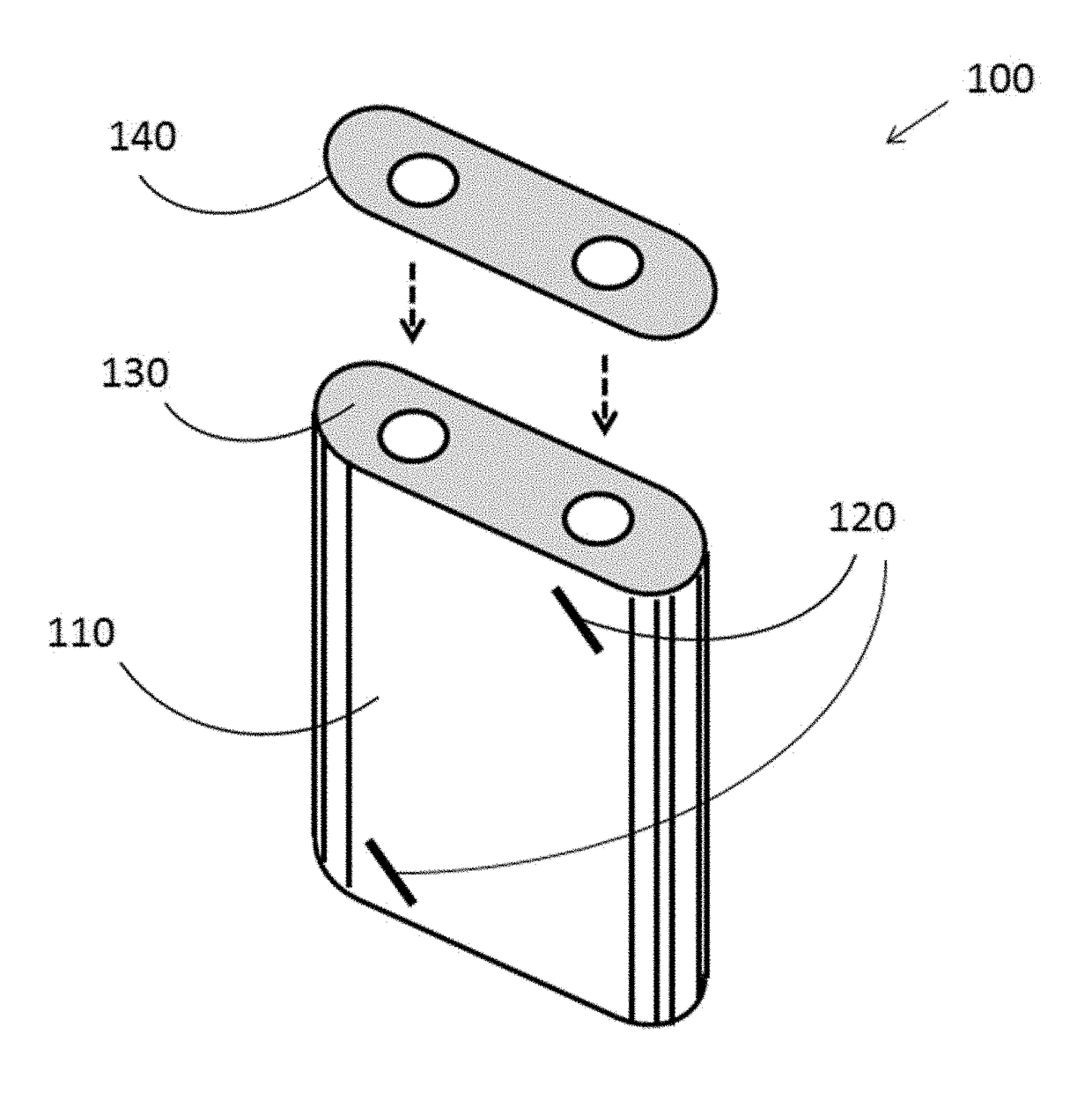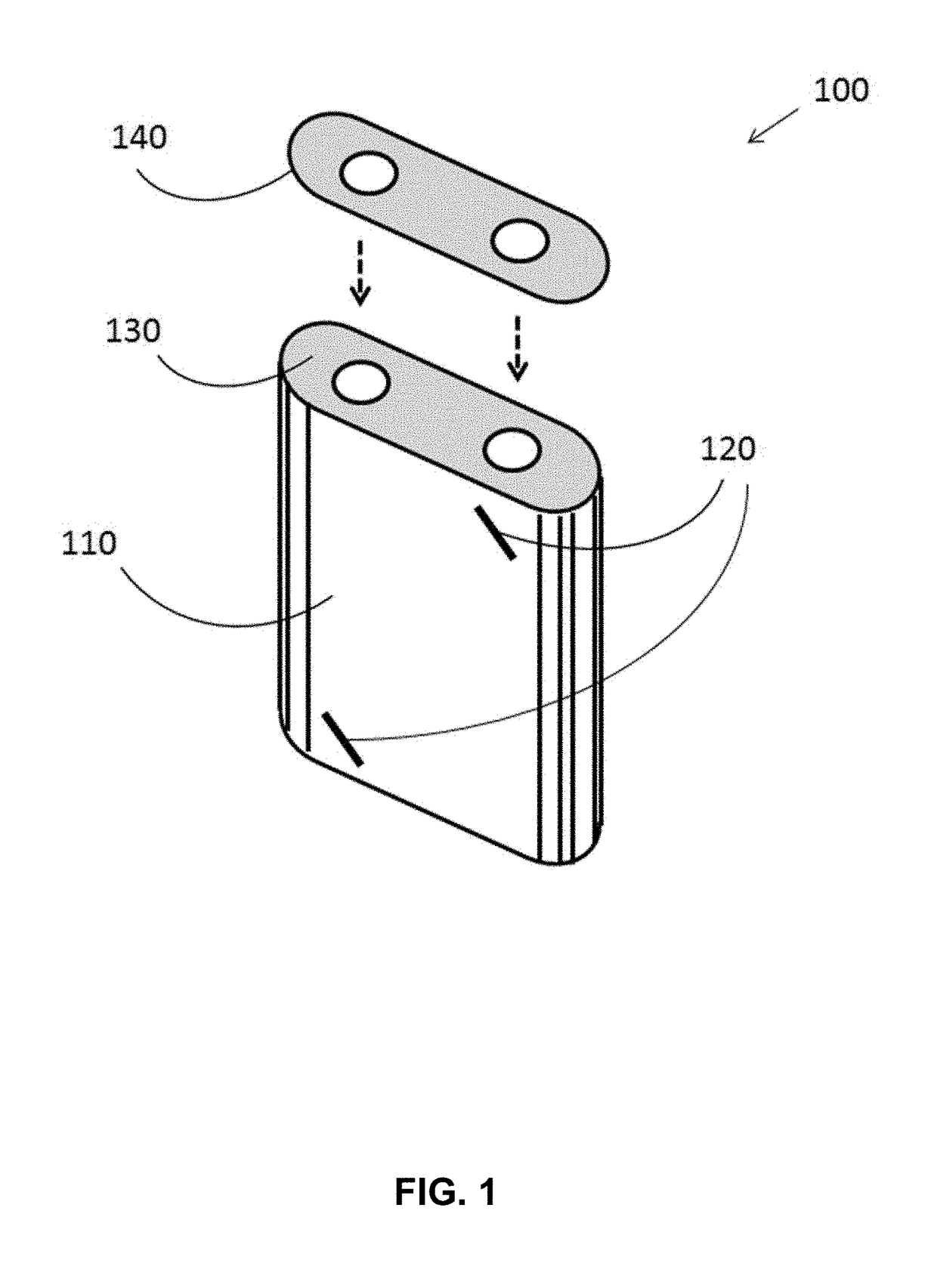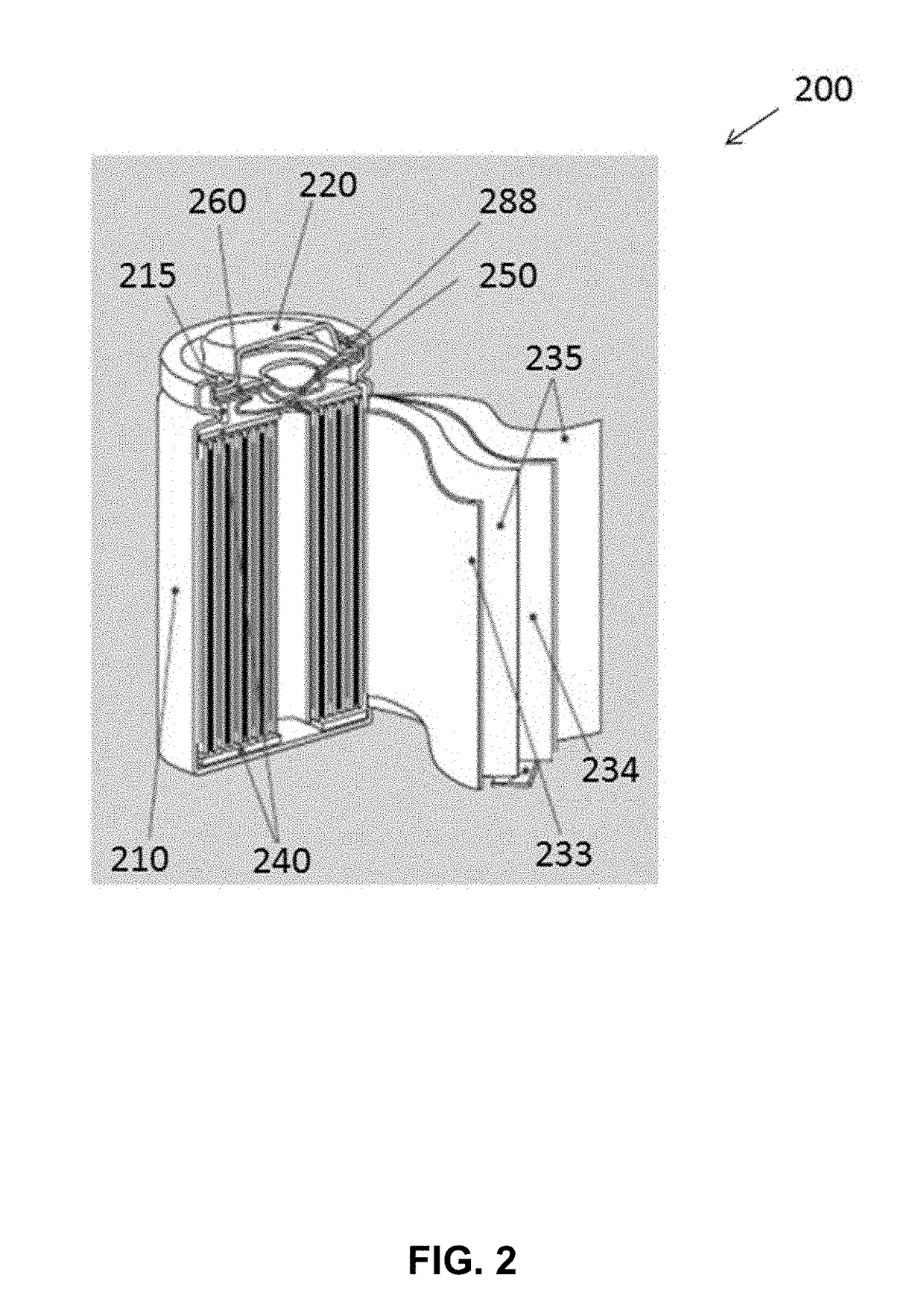Batteries for use in implantable medical devices
a technology for medical devices and batteries, applied in batteries, safety/protection circuits, therapy, etc., can solve problems such as thermal runaway, libs are particularly susceptible to abuse, and libs present certain safety hazards, so as to prevent over-charging of packs, and mitigate a dangerous condition in cells
- Summary
- Abstract
- Description
- Claims
- Application Information
AI Technical Summary
Benefits of technology
Problems solved by technology
Method used
Image
Examples
Embodiment Construction
[0029]Various aspects, features, objects, and advantages of the disclosed innovations will become apparent through reference to the following description and the drawings. Any particular embodiments described herein are not mutually exclusive and can exist in various combinations and permutations even if not specifically indicated herein. Also, various modifications may be made to the embodiments described herein, and the disclosed embodiments and details should not be construed as limiting but instead as illustrative of some embodiments in accordance with the inventions.
[0030]A battery according to the present disclosure is capable of identifying a fault or a condition that is a precursor to a fault or that predicts a fault. The fault or pre-fault condition is identified based on the measurement of certain parameters in a cell or cells. Based on one or more measured parameters, the battery may determine that the battery has faulted, is likely to have a fault in the near future, or ...
PUM
 Login to View More
Login to View More Abstract
Description
Claims
Application Information
 Login to View More
Login to View More - R&D
- Intellectual Property
- Life Sciences
- Materials
- Tech Scout
- Unparalleled Data Quality
- Higher Quality Content
- 60% Fewer Hallucinations
Browse by: Latest US Patents, China's latest patents, Technical Efficacy Thesaurus, Application Domain, Technology Topic, Popular Technical Reports.
© 2025 PatSnap. All rights reserved.Legal|Privacy policy|Modern Slavery Act Transparency Statement|Sitemap|About US| Contact US: help@patsnap.com



